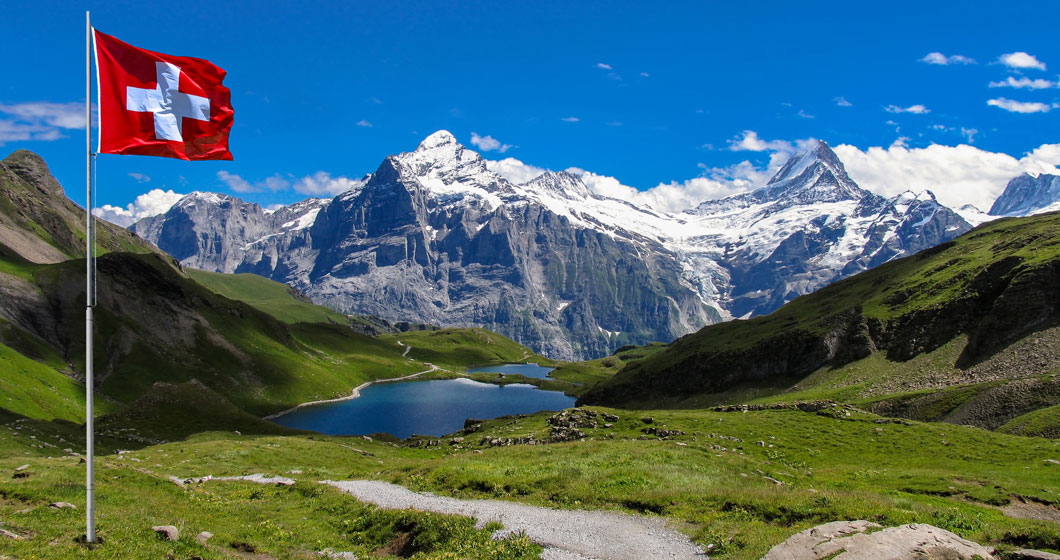
Switzerland
Switzerland
Switzerland is a landlocked country in Central Europe, bordered by Germany, France, Italy, Austria, and Liechtenstein. It covers about 41,290 square kilometers (15,940 square miles), with a population of approximately 8.7 million people (2024 estimate). The country’s landscape is dominated by the Alps and the Jura Mountains, interspersed with fertile valleys, rolling hills, and more than 1,500 lakes.
Switzerland, often called the "Heart of Europe," is renowned for its breathtaking alpine scenery, pristine lakes, and vibrant cities. Known for its neutrality, high standard of living, and rich cultural diversity, Switzerland is a fascinating blend of tradition and innovation.
- Switzerland holds regular referendums, allowing citizens to directly influence government policy at both national and cantonal levels.
- The canton of Uri is considered the birthplace of the Swiss Confederation, dating back to 1291.
- Romansh became the fourth national language in 1938.
With its blend of regional diversity, linguistic richness, and cultural traditions, Switzerland stands out as one of the world’s most unique and harmonious countries.

Swiss Cantons
Switzerland is a federal state made up of 26 cantons, each with its own constitution, parliament, and government. The cantons vary greatly in size, population, and cultural traditions. Some are known for their alpine scenery, others for their urban centers or linguistic diversity.
|
Canton |
Capital |
Main Language(s) |
Population (approx.) |
|
Zürich |
Zürich |
German |
1.5 million |
|
Bern |
Bern |
German, French |
1.0 million |
|
Vaud |
Lausanne |
French |
820,000 |
|
Aargau |
Aarau |
German |
700,000 |
|
St. Gallen |
St. Gallen |
German |
520,000 |
|
Geneva |
Geneva |
French |
515,000 |
|
Lucerne |
Lucerne |
German |
420,000 |
|
Ticino |
Bellinzona |
Italian |
360,000 |
|
Valais |
Sion |
French, German |
360,000 |
|
Basel-Stadt |
Basel |
German |
205,000 |
|
Basel-Landschaft |
Liestal |
German |
295,000 |
|
Thurgau |
Frauenfeld |
German |
285,000 |
|
Fribourg |
Fribourg |
French, German |
330,000 |
|
Solothurn |
Solothurn |
German |
280,000 |
|
Grisons (Graubünden) |
Chur |
German, Romansh, Italian |
200,000 |
|
Schwyz |
Schwyz |
German |
165,000 |
|
Zug |
Zug |
German |
130,000 |
|
Neuchâtel |
Neuchâtel |
French |
180,000 |
|
Schaffhausen |
Schaffhausen |
German |
85,000 |
|
Jura |
Delémont |
French |
75,000 |
|
Appenzell Ausserrhoden |
Herisau |
German |
55,000 |
|
Appenzell Innerrhoden |
Appenzell |
German |
16,000 |
|
Glarus |
Glarus |
German |
40,000 |
|
Nidwalden |
Stans |
German |
44,000 |
|
Obwalden |
Sarnen |
German |
38,000 |
|
Uri |
Altdorf |
German |
37,000 |
|
Basel-Landschaft |
Liestal |
German |
295,000 |
Each canton maintains its own traditions, festivals, and in some cases, unique dialects. This diversity is central to Swiss identity.
Population and Languages
Switzerland’s population is about 8.7 million people (2024), with a dense urban population in cities like Zürich, Geneva, Basel, Bern, and Lausanne, and picturesque villages scattered across the mountains and valleys. The country has a reputation for welcoming people from around the world, with nearly 25% of residents being foreign nationals.
Switzerland is celebrated for its linguistic and cultural mosaic. Four official national languages are recognized, and their use is regionally distributed:
- German: Spoken by about 63% of the population, mainly in the central and eastern regions. The Swiss German dialects (Schweizerdeutsch) can vary markedly between cantons.
- French: Used by approximately 23% of the population, mostly in the western part of Switzerland (Romandy), in cantons like Geneva, Vaud, Neuchâtel, Jura, and parts of Fribourg and Valais.
- Italian: Spoken by about 8% of the population, primarily in the southern canton of Ticino and part of Graubünden.
- Romansh: The least common, spoken by less than 1% of the population, mostly in some valleys in the canton of Graubünden. Romansh itself has several regional dialects.
Many Swiss are multilingual, and English is increasingly spoken, especially in business and tourism.
Major Cities
- Bern: The capital city, known for its medieval old town (a UNESCO World Heritage Site) and as the seat of the Swiss government.
- Zurich: The largest city and economic heart of Switzerland, known for financial services, culture, and nightlife.
- Geneva: International hub for diplomacy and organizations like the UN and Red Cross.
- Basel: Artistic and architectural center, with world-famous museums and fairs.
- Lausanne: The Olympic capital and a vibrant university city on Lake Geneva.
- Lugano: Lakeside city with Italian influences in culture, cuisine, and language.
Culture and Traditions
Swiss culture is a tapestry of German, French, Italian, and Romansh heritages. Punctuality, precision, and privacy are highly valued. Each canton has its own festivals, dialects, and customs. Traditional music (like yodeling and alphorn), food (fondue, raclette), and crafts are celebrated across the country. Multilingualism is a daily reality in schools, workplaces, and media.



